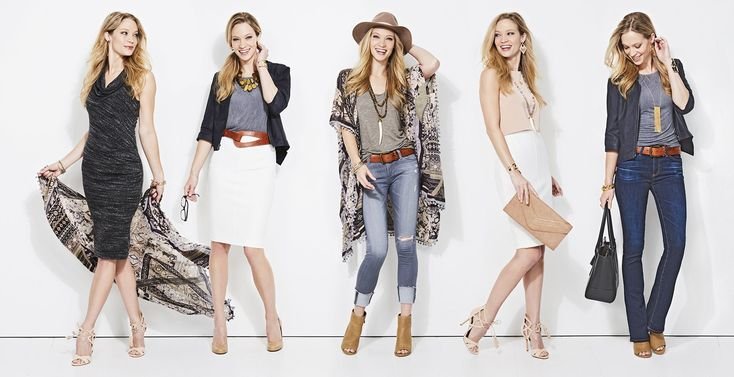In today’s fast-paced world, where trends change in the blink of an eye, the fashion industry is one of the biggest contributors to environmental waste. From overproduction to synthetic fabrics that take centuries to decompose, the cost of keeping up with trends goes far beyond our wallets. That’s where sustainable fashion comes in. More than just a buzzword, it’s a lifestyle choice that emphasizes mindful purchasing, responsible care for clothes, and prioritizing quality over quantity.
Adopting sustainable fashion practices doesn’t mean sacrificing style or limiting your wardrobe choices. Instead, it’s about creating a balance—choosing pieces that not only make you feel confident but also respect the planet. By making small yet conscious decisions, like buying timeless items, caring for your clothes properly, and exploring ethical brands, you can significantly reduce your environmental footprint.
At Friend of The Earth, we believe that change begins with individual choices. Each time you decide to wear something responsibly sourced, you are voting for a healthier planet. This guide will provide practical tips to help you transition into a wardrobe that is not only stylish but also eco-conscious.
Choose Quality Over Quantity
One of the simplest and most effective ways to practice sustainable fashion is to buy fewer but higher-quality clothes. Fast fashion often lures us in with low prices and trendy designs, but these items rarely last more than a season. In contrast, well-made clothing crafted from durable fabrics like organic cotton, linen, or recycled materials can serve you for years.
When shopping, check the stitching, fabric feel, and overall construction of a garment. A timeless, versatile item may cost more upfront, but in the long run, it saves money while minimizing waste. Think of it as an investment not only in your wardrobe but also in the environment. By supporting brands that emphasize craftsmanship and sustainability, you also encourage the fashion industry to shift toward better practices.
Embrace Timeless and Versatile Pieces
Trends fade quickly, but classic styles remain relevant year after year. Building your wardrobe around timeless essentials—like a crisp white shirt, a well-tailored blazer, or a pair of high-quality denim—helps reduce the urge to constantly chase new trends. Versatility is key here; a single item that can be styled in multiple ways cuts down the need for excess clothing.
This approach not only saves closet space but also lowers your overall fashion consumption. By learning to mix and match your essentials, you can create countless outfit combinations without constantly buying something new.
Support Ethical and Eco-Friendly Brands
The fashion industry is evolving, and many forward-thinking brands are making sustainability a core part of their mission. Look for companies that use organic fabrics, recycled materials, or adopt fair-trade practices to ensure ethical labor conditions.
Brands certified by organizations like Friend of The Earth demonstrate their commitment to responsible sourcing and reduced environmental impact. Supporting such companies not only promotes better industry standards but also empowers you to be part of the solution.
Reuse, Repair, and Upcycle
Before tossing out a piece of clothing, ask yourself if it can be repaired or reinvented. Simple fixes like sewing a loose button or patching a small tear can extend the life of a garment. For items that no longer fit or suit your style, consider upcycling—transforming them into something new. For example, an old dress can be turned into a chic top, or worn-out jeans can become stylish shorts.
This not only reduces waste but also gives your wardrobe a personal, creative touch.
Mindful Washing and Clothing Care
Sustainability doesn’t end at purchase; how you care for your clothes also matters. Overwashing garments shortens their lifespan and increases water and energy use. Washing with cold water, air drying when possible, and avoiding harsh chemicals can make a significant difference.
Investing in gentle detergents and learning proper fabric care ensures that your clothes stay in good condition longer, reducing the need for frequent replacements.
Shop Secondhand and Vintage
Thrift shops, vintage stores, and online resale platforms are treasure troves for unique, stylish finds. Buying secondhand not only saves money but also prevents clothing from ending up in landfills. Vintage pieces often come with superior craftsmanship and timeless appeal, making them both fashionable and sustainable.
This practice keeps the fashion cycle circular, ensuring that garments live longer lives.
Organize and Declutter Your Wardrobe
An overflowing closet often leads to wasteful habits. Take time to organize your wardrobe and identify what you truly wear and value. Decluttering allows you to see your existing pieces more clearly, encouraging you to use them more creatively.
You can donate, sell, or swap unwanted items, giving them a second life with someone else instead of letting them go to waste.
Final Thoughts
Transitioning to a more eco-conscious wardrobe doesn’t happen overnight, but small, consistent steps lead to lasting change. By choosing quality over quantity, embracing timeless fashion, supporting ethical brands, and caring for your clothes, you not only create a sustainable wardrobe but also contribute to a healthier planet.
